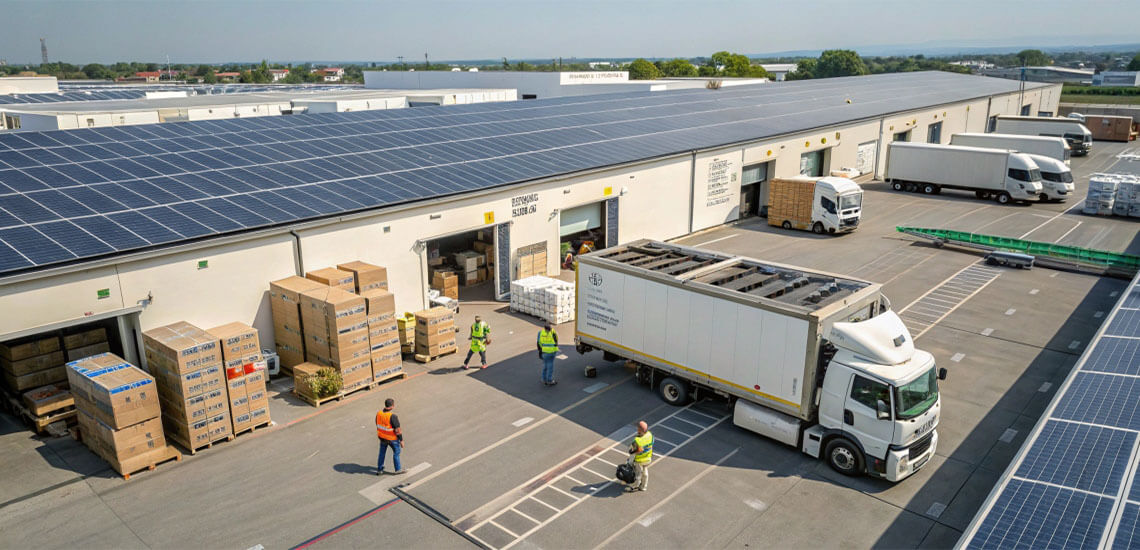Más allá de reducir costos y ganar una buena reputación, tener un almacén sostenible es un deber para una compañía de logística por los aspectos positivos que trae al mundo entero, en términos de utilización de fuentes de energía alternativa y el aprovechamiento de los residuos.
Si te estás preparando para tener una logística sostenible, esta información te interesa. Sigue leyendo.
Las encuestas indican que los consumidores prefieren que sus entregas sean más sostenibles. En un estudio del 2021, Sifted indicó que de 500 entrevistados, el 91% quiere un botón de envío ecológico y el 57% está dispuesto a pagar un valor adicional por tener esta opción.
Sin embargo, en otra encuesta, parcelaLab investigó el comportamiento de 50 marcas y concluyó que el 52% utilizaron envases de plástico para los envíos.
Esto nos lleva a concluir que las empresas tienen una gran oportunidad para ganar la atención de nuevos consumidores, quienes buscan marcas sostenibles. Para las empresas esto no significa altos costos, por el contrario, usar menos papel en el embalaje les ayudará a ahorrar.
Ahora veamos qué otras acciones tomar para lograr tener un almacén sostenible y aprovechar este nicho de mercado.
Funciones óptimas en las instalaciones
En un artículo para 2021, el sitio de noticias FreightWaves anunció las cinco tendencias para almacenes sustentables, entre las que incluyó las funciones óptimas en las instalaciones, lo cual se refiere a usar efectivamente los componentes que conforman un establecimiento como luz, agua, equipos electrónicos, etc.
Para demostrar un caso práctico, Colgate-Palmolive encontró una manera muy sustentable para lograr un almacén sostenible en Burlington, Canadá, con un proyecto que les mereció el galardón Leed Zero (Leadership in Energy & Enviromental Design).
Este proyecto inició en 2017 con la instalación de energía solar para reducir el uso de energía eléctrica y carbono. Para 2025 proyecta tener cero emisiones netas de carbono y para 2030, electricidad 100% renovable. Un buen ejemplo de lo que significa tener visión ‘ecologística’.
Vehículos eléctricos dentro de un almacén sostenible
Tanto fuera como dentro de las instalaciones de almacenamiento, los vehículos eléctricos se utilizan para ganar eficiencia. En Quick ya lo hicimos. Añadimos a nuestra flota, vehículos que producen cero emisiones de CO₂, generan menor contaminación auditiva, aumentan la autonomía en kilómetros, mejoran la capacidad de carga y contribuyen a la reducción de la huella de carbono.
El transporte en la logística es uno de los principales generadores de emisiones de carbono, razón que ha llevado a muchas empresas, como nosotros, a sumarse a la iniciativa de logística verde; un nuevo concepto que pretende implementar estrategias para proteger el medioambiente sin afectar la operación.
Y si sumamos a los vehículos eléctricos la tecnología de Última Milla, los beneficios se multiplican, ya que contar con un software de gestión del transporte permite controlar el consumo de energía, optimizar el tiempo de recorrido y mucho más.
Automatización y bienestar
Así como ocurre con el transporte, en el proceso de almacenamiento, la utilización de tecnología para automatizar algunas funciones es una ventaja para cualquier negocio. Esta puede hacer más ágil un proceso que antes se consideraba tedioso y adicionalmente, es estupenda para prevenir accidentes.
Así le ocurrió a Frito-Lay al implementar la tecnología de Kinetic, un hardware con el que se pueden evitar accidentes o enfermedades laborales. Con esta tecnología y bajo el programa “Beyond Zero – Pursue Positive”, Frito-Lay redujo un 19% las lesiones laborales y un 67% la pérdida de horas de trabajo.
Ahora bien, viéndolo desde el ámbito internacional, las normas ISO contemplan 3 estándares fundamentales para que toda empresa lleve su gestión de manera adecuada: la calidad (ISO 9001), la seguridad y salud en el trabajo (ISO 45001) y el medio ambiente (ISO 14001). Una razón más para tener en cuenta el bienestar tanto del planeta como de los colaboradores.
Ubicación y dark stores
Un punto crucial para tener un almacén sostenible es la ubicación y es aquí donde las dark stores o tiendas ocultas entran a jugar un rol importante. Estos son sitios donde se almacenan productos muy vendidos y que suelen estar en centros urbanos donde se registran mayor número de compras. Pero contrario a las tiendas comunes, las dark stores no están abiertas al público.
Operativamente, son una buena estrategia para llevar el pedido a los consumidores en menor tiempo, gracias a la cercanía de estas tiendas al punto de entrega, y en términos de sostenibilidad también son un plan brillante.
En Quick ya utilizamos las dark stores para algunos de nuestros clientes, ofreciéndoles velocidad y menor consumo de combustible de los vehículos que transportan la mercancía, gracias a que recorren distancias más cortas.
Reciclaje
No podíamos olvidarnos del reciclaje, una actividad tan común en casa que a veces olvidamos aplicar en las empresas porque requiere una organización. A continuación te sugerimos seguir estos pasos para llevarla a cabo sin excusas:
- Identifica los recursos que tienes y qué cantidad necesitas
- Programa una fecha para recoger los recursos que se puedan reutilizar
- Separa los residuos según el tipo para reciclar
- Integra a toda la comunidad que hace parte de tu organización
FEMSA, por ejemplo, maneja una política de reciclaje con sus clientes, recolectando los productos dañados en las tiendas y llevándolos de vuelta a los centros de distribución, demostrando que es posible reciclar, reutilizar y al mismo tiempo, ahorrar costos operativos.
Ahora que conoces las maneras de lograr un almacén sostenible es momento de que las pongas en práctica. Recuerda que la sostenibilidad empieza por los mismos trabajadores. Tener una cultura verde en la que se promueva el reciclaje o el uso de energías renovables es el primer paso para llegar al 100% de la ‘ecologística’.

